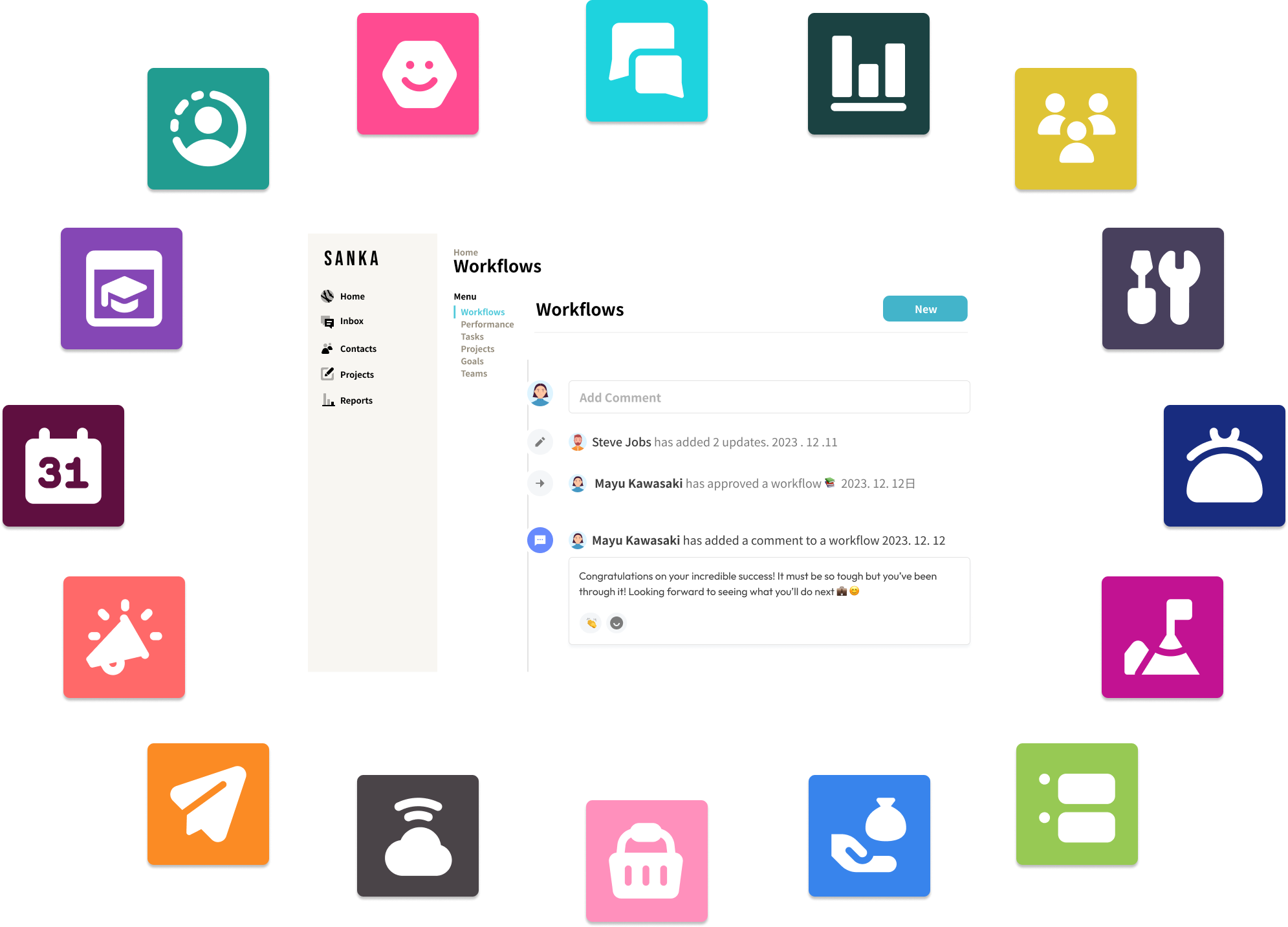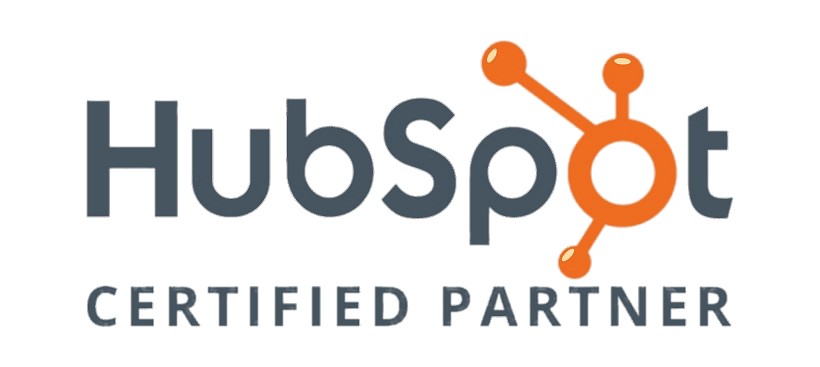Introduction
Digital transformation involves a fundamental change in a business's operation, leveraging digital technology to modify processes, drive growth, and deliver value to customers.
In today's digital era, it's not just an option; it's a necessity for companies across industries to maintain a competitive edge.
Across industries, companies that have strategically harnessed digital technology can streamline operations, meet changing customer expectations, and stay ahead in a digitized world.
To illustrate the true strength of digital transformation, we present compelling examples from big brands that successfully implement digital transformation.
This blog post will shed light on the successful digital transformations of several global brands, delving into how they navigated the transition, the strategies they deployed, and the significant outcomes they achieved.
Netflix: Streaming a Digital Revolution

Initially a DVD-by-mail service, Netflix quickly adopted a streaming model and went on to revolutionize the way we consume TV shows and movies.
With its ability to offer unlimited on-demand content and personalized recommendations through data analytics, Netflix disrupted the traditional cable and broadcast TV industry.
Netflix continues to evolve through original content production and pioneering technologies like 4K streaming and interactive storytelling.
Why It Succeeded:
Early Adoption of Technology
Netflix has consistently demonstrated its ability to stay ahead of the technology curve by adopting innovative solutions, such as moving from DVD rentals to streaming and creating its content delivery network, Open Connect.
Data-driven Decision-Making
Netflix amasses vast amounts of user data, which it employs to optimize content recommendations, marketing strategies, and even developing original content.
This data-driven approach has kept Netflix relevant and highly personalized.
Focus on User Experience
Netflix has made user experience a priority by developing a signature interface, streamlining video streaming, and customizing content recommendations.
Their investment in user experience has cultivated a loyal customer base, who appreciate a smooth viewing experience.
Bold Investment in Original Content
Netflix's original content investment has generated a vast range of critically acclaimed and commercially successful shows and movies.
This exclusivity has made Netflix a must-have service for entertainment enthusiasts.
Organizational Agility and Adaptability
Netflix's ability to be agile and adapt to changing market conditions stems from its strong leadership, which has cultivated a culture of rapid innovation and risk-taking.
This organizational adaptability is a pivotal component of Netflix's digital transformation success.
Adobe: A Cloud Worth Every Penny

Adobe has successfully leaped from selling packaged software to offering cloud-based applications.
Transitioning to the Creative Cloud subscription model improved Adobe’s ability to provide constant updates and innovations to its customers.
It also effectively addressed problems like software piracy. Adobe broadened its reach by introducing the Document and Experience Clouds, capitalizing on the robust demand for digital marketing and document management solutions.
Why It Succeeded:
Customer-Centric Approach
Adobe recognized customers' shifting preferences and market dynamics, moving from a traditional software model to a cloud-based subscription model, making access to Adobe's tools more affordable and convenient.
Adaptability and Bold Decision-Making
Adobe demonstrated the importance of bold decision-making by ending the sale of Creative Suite, effectively forcing users to adapt to the subscription-based model.
This allowed Adobe to secure a long-term revenue generation model, solidifying its market position.
Continuous Product Improvement
By implementing a cloud-based approach, Adobe can offer continuous updates and improvements, ensuring its customers have access to the latest and most refined tools.
This approach has contributed to increased customer satisfaction and loyalty.
Expanding Market Reach
Beyond traditional sectors, Adobe extended its market reach by offering comprehensive solutions tailored for marketing, analytics, and digital document processing through the Experience and Document Clouds.
This expansion allowed Adobe to attract new customers and solidify its market position.
Effective Strategies Against Piracy
The shift from a packaged software model to the Creative Cloud significantly reduced piracy—customers found it more advantageous to subscribe and enjoy legal access easily, rather than procure illegal copies of Adobe applications.
Airbnb: Opening Doors to the World
Airbnb's digital transformation disrupted the traditional hospitality industry. The platform connects hosts and guests, offering a global marketplace for lodging alternatives.
It has grown into a powerhouse within the travel and hospitality industry due to its successful digital transformation.
Key elements of Airbnb's success include a user-friendly interface, a secure payment system, and a comprehensive review structure that builds reliability and trust.
Moreover, the introduction of "Airbnb Experiences" diversified the offerings and solidified Airbnb's position in the travel and tourism sector.
Why It Succeeded:
Disrupting the Traditional Hospitality Industry
By creating a new business model, Airbnb disrupted the traditional hospitality industry and demonstrated how digital innovation could create a vastly different and customer-centric approach to lodging.
Leveraging a User-Friendly Platform
Airbnb's user-friendly platform allowed hosts and guests to connect effortlessly and make transactions securely.
By focusing on user experience, Airbnb created a community that fostered trust and built loyalty.
Emphasis on Trust & Security
Airbnb ingrained trust and security into its digital platform by implementing features such as identity verification, host and guest reviews, and a secure payment system.
These measures were crucial in reassuring users in the early days and helped establish Airbnb as a reputable platform.
Global Scalability & Access
Airbnb's digital infrastructure allowed for rapid scaling and global access, resulting in a significant impact on the lodging market and its widespread adoption by travelers.
Customer-Centric Approach & Personalization
Airbnb's customer-centric culture revolutionized travel accommodations and fueled its success.
By utilizing data collected while customers interact with the platform, Airbnb can provide personalized recommendations catered to a user's tastes, which in turn increases engagement and drives loyalty.
Starbucks: Brewing Up a Digital Storm

From a traditional coffee shop to a digital behemoth, Starbucks harnessed mobile technology to enhance the customer experience.
A significant first step in Starbucks' digital transformation was the introduction of the Starbucks Card—a rechargeable payment card that allowed customers to make purchases without cash while earning loyalty points.
Starbucks enhanced the Starbucks Card's functionality by launching a mobile app, allowing customers to pay using their smartphones.
The Starbucks mobile app, with features like Mobile Order & Pay, created a seamless customer experience.
They harnessed data analysis, and cloud, mobile, and social media technologies for customer engagement and business operations, fundamentally reshaping the traditional coffee shop experience.
Starbucks' data-driven strategy also stood out, where personalization and customer insights were used to make tailored recommendations, revolutionizing customer engagement.
Why It Succeeded:
Seamless Omni-channel Customer Experience
Starbucks successfully managed to close the gap between the online and offline worlds, enhancing customer convenience.
The mobile app design facilitates an efficient and user-friendly experience that successfully integrates with in-store services.
Effective Use of Data
Through its digital platforms, Starbucks collects a wealth of customer data. By analyzing this data, the company can offer highly personalized recommendations and communications, enhancing customer engagement and loyalty.
Embracing Mobile Payments Early
Starbucks was one of the early adopters of the mobile payment trend, offering its customers convenience and speedier transactions.
This brought about higher customer satisfaction and quicker service times.
Leveraging AI for Personalized Service
The use of 'Deep Brew' enabled Starbucks to provide a highly personalized customer experience, offering product recommendations, and ensuring content relevancy. AI also improved operational efficiency.
Reinventing Loyalty Program
Starbucks revitalized its loyalty program by synthesizing it with digital technology. The Starbucks Rewards system established within the mobile app incentivizes customers further and improves their brand loyalty.
DBS Bank: Digital Banking, Simplified
DBS Bank, Southeast Asia's largest bank, embarked on a comprehensive journey to reshape its banking operations into a digitally prime ecosystem.
They initiated the 'Gandalf' project, which involved implementing technology at every customer touchpoint and reenvisioning processes to mimic a start-up mindset.
One notable success is the advent of "Digibank", their mobile-led bank, allowing consumers to set up accounts, transfer funds, and access other services without visiting a physical branch.
DBS also effectively used data analytics and AI to improve customer service and streamline internal operations, proving that even traditional sectors like banking can become digital champions.
Why It Succeeded:
Culture of Change and Innovation
DBS Bank's management nurtured a culture of openness to change, encouraging employees to embrace digital technologies and new working methods.
This cultural shift has been crucial in pushing the bank's digital transformation forward.
New and Improved Customer Experience
The bank's commitment to enhancing the customer experience set the stage for much of its digital transformation.
By introducing impressive mobile apps and digitizing its services, DBS Bank offered customers an improved, seamless banking experience.
Leveraging Data and AI
DBS Bank's use of data analytics enabled it to gain insights into customer behavior, which proved beneficial for personalizing services and engaging customers.
The application of AI also led to significant efficiency improvement and cost reduction in back-end operations.
Investment in Digital Infrastructure
The bank's significant investment in overhauling its digital infrastructure played a primary role in its transformation.
Revamping core banking systems and adopting cloud computing technologies enabled the bank to efficiently manage operations and serve its digitally savvy customers.
Prioritizing Cybersecurity
In an era where data breaches and security threats are top concerns for digital banking, DBS has prioritized cybersecurity.
These stringent measures increase customer trust and confidence in the bank's digital platforms.
The New York Times: The Pulse of the Digital Age
In a world evolving towards digitization, traditional print media was feeling the strain. The New York Times realized the need for transformation as early as 2011 and gradually shifted towards a digital subscription model.
Print advertising revenues were declining, but digital subscriptions began to pour in, securing a new, robust revenue stream.
The NYT’s shift from print to digital subscriptions met the changing customer preferences head-on.
It also leveraged data analytics for targeted advertising and personalized content and invested in digital storytelling to deliver content through various engaging formats, such as podcasts and interactive articles.
Why It Succeeded:
Adapting Business Model to Changing Consumer Preferences
The key to the NYT's digital transformation success lies in its willingness to adapt its business model to meet changing consumer preferences.
By introducing the paywall and shifting focus to digital subscriptions, the company managed to redefine its revenue streams and prepare for a digital-first future.
Expanding Digital Content and Platform Offerings
The New York Times has continuously evolved its digital content and storytelling styles to cater to various audiences and platforms.
By developing mobile-responsive websites, creating interactive articles, and producing podcasts, the company has diversified its content and stayed ahead of the competition.
Fostering a Data-Driven, Technologically-Savvy Culture
The NYT's investment in data analytics and AI has not only streamlined operations and optimized content delivery but has also fostered a data-driven, technologically-savvy culture.
This innovative mindset is now embedded throughout the organization, allowing it to stay ahead in an ever-evolving digital landscape.
Prioritizing Quality Journalism and Brand Reputation
Through the digital transformation process, The New York Times has remained committed to producing quality journalism, reinforcing a strong brand reputation that transcends print and digital media.
By capitalizing on its digital strengths while maintaining its core journalistic principles, the NYT continues to command respect and loyalty from its readership.
General Electric: Powering Digital Industrial Leadership
Once seen purely as a manufacturing company, General Electric (GE) successfully migrated to a digital industrial company by creating GE Digital.
This demonstrates the instrumental role digital connectivity and automation play in streamlining operations and enhancing productivity.
GE's primary innovation was Predix, a cloud-based Platform-as-a-Service that enables industrial-scale analytics for asset performance management and operations optimization.
In essence, Predix is a pioneering step towards shaping the framework of the Industrial Internet.
Predix analyzes data from industrial machines for insights, thus optimizing performance and reducing downtime.
GE also established a Digital division, reinforcing its stance as a leading digital industrial company.
Why It Succeeded:
Strong Leadership and Vision
A clearly stated, ambitious vision for the digital industrial era laid the groundwork for GE's digital transformation.
This vision, driven by strong leadership and backed by significant investment in technology, set a clear direction for the company's journey.
Development of Predix IIoT Platform
Launching the Predix platform played a central role in GE's transformation, positioning the company as a pioneer in the IIoT market.
As an industry-agnostic platform, Predix enabled GE to cater to various sectors, offering solutions for data acquisition, analytics, and optimization.
Founding of GE Digital
Establishing GE Digital marked a crucial shift in the company's business model.
Combining GE's software development capabilities with its decades of industrial expertise, the division focused on delivering digital solutions that unlock the full potential of the Industrial Internet.
Adopting Advanced Technologies and Building Partnerships
GE's commitment to staying at the forefront of advanced technologies propelled its digital transformation.
By integrating data analytics, machine learning, and other cutting-edge technologies into its solutions, GE has been able to deliver significant value to its clients.
Additionally, GE's strategic collaborations with industry leaders accelerated its digital transformation by leveraging the combined power of expertise and resources.
Nike: Just Digitize It

Nike, a global leader in sports apparel and accessories, has successfully advanced its business strategies to the digital realm, while reinventing the customer experience and leading the way in digital innovation.
By focusing on mobile apps, personalization, and data analytics, Nike has fostered a strong engagement with its customers.
Through the Nike Training Club and Nike Running Club apps, the company created a fitness community and direct consumer outreach - a successful strategy that extends beyond just product selling.
Why It Succeeded:
Strong Digital Ecosystem
Nike's digital ecosystem, from the Nike+ community to mobile apps, has been crucial in engaging consumers and strengthening customer relationships.
These platforms not only offer shopping facilities but also support community building and lifestyle-centered features.
Emphasis on Mobile and E-Commerce
The shift towards mobile and e-commerce met the changing patterns of consumer behavior.
Revamping its website and launching the SNKRS app demonstrated how Nike effectively captured shifting consumer shopping trends.
Use of Data for Personalization
Harnessing customer data for insights and personalization has been a significant contribution to Nike's digital success.
The use of data to inform product offerings and target customers effectively is a compelling example of a data-driven approach to digital transformation.
Investment in Technology and Innovation
By acquiring tech startups and constantly pushing for digital innovation in its offerings, Nike has been successful in staying at the forefront of digital trends in retail.
Technology investments have played a crucial role in Nike's ability to leverage data analytics and prediction capabilities.
Conclusion
Successful digital transformation is a journey that revolves around customer-centric strategies, innovation, technological integration, and strong leadership.
As we have seen from the examples of worldwide brands in this blog post, companies that have embraced digital transformation have not only bolstered their operational efficiency and profit margins but have also managed to deliver superior customer experience.
It's no longer a question of "why" businesses should embrace digital transformation, but "how" they can best leverage it to their advantage.
While the specific implementation will vary across sectors and individual companies, the core principles remain the same: customer-centricity, data-driven decision making, embracing cutting-edge technology, and the willingness to take bold steps.








